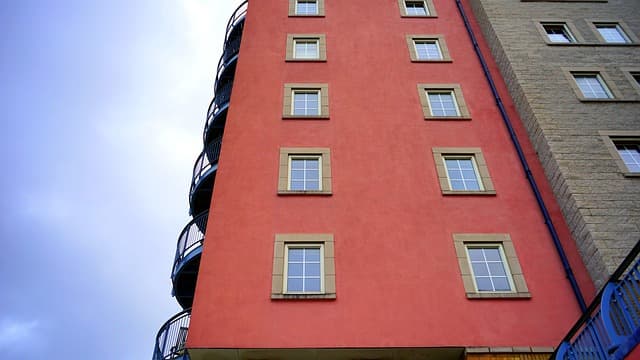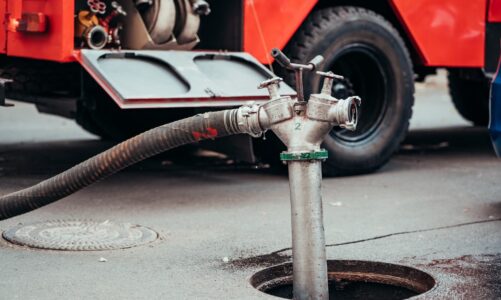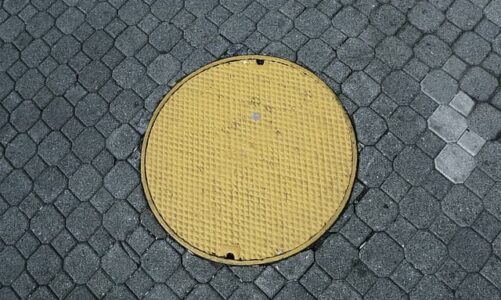The work of the drainage system is not limited directly to the collection of water: the competent organization of drainage on the site will also require a storm drainage system of pipes and canals. The absence of a storm drain on the site often leads to negative consequences – the destruction of the facade, insulation and foundations. Often, with heavy rainfall there is a risk of flooding the basement or basement floor.
Competent arrangement of storm drainage system will allow full use of the territory around the house or building – parking lots, recreation areas, soil. Only the joint use of drainage and drainage systems ensures the absence of flooding, mold, dampness from precipitation.
Types of storm drains around the house
There are three basic types of storm drainage:
- Closed;
- Open;
- Mixed.
Closed storm drainage is more expensive and requires more professional skills for installation and maintenance. Such a system is complete with underground pipes through which water travels to a storm drain, and from there through a storm-well into an open reservoir or the central sewer system.
Rainwater drainage of the open type is more often used for small cottages and is more affordable. In this case, the storm drainage system consists of shallow trays through which meltwater and rain are diverted to flower beds or lawns. With the open type of storm drain, the use of a sewer is not provided.
Mixed type combines elements of open and closed systems and is the most popular. In this case, water passes part of the way through open trays and then enters the pipes, from where it moves to the sewer or to the place of disposal.
Those or other elements of the system are selected by specialists, depending on the type of storm drain for each particular object. The greatest difficulty in this regard are homes with flat roofs.
The principle of operation of the storm drain
Connecting the drainpipe to the storm drainage funnel, with a break in the jetPrinciple of operation of the storm drain is uncomplicated. On the roof of the house (building) are mounted funnels, gutters and downspouts, which serve to collect precipitation from the roof.
The system itself is collected on the principle of the constructor. To this end, the industry produces plastic pipes of various diameters and lengths, as well as all the necessary fittings (elbows, tees). Receiving collector system should be located below the depth of freezing of the soil, and when it is impossible, additionally insulated.
Scheme of a full-fledged storm drain includes other elements, including the system of collection and subsequent disposal. For this purpose, wells, inlets, the system of pipelines through which water is transported, as well as inspection wells and trays for linear drainage, open reservoirs or special tanks for water collection are used. In addition to this, specialists use siphons, plugs and filters.
Creation of the project of storm drainage
Storm drains are installed by owners of private cottages, in settlements, industrial plants and other facilities where it is necessary.
To calculate the project it is necessary to know the geological features of the adjacent territory, landscape features, architectural specifics of the structure, as well as the average annual precipitation. In addition, data on the location of existing utilities will be required. It is necessary in order to exclude probability of their damage during excavation works.
After the information is processed, working drawings, a plan of the sewerage network and an estimate with a description of costs in accordance with the materials used and the scope of work, as well as other documents are created.
System maintenance and preventive maintenance of blockages
Cleaning of gutters from leavesIt is an essential element of system maintenance that its elements are regularly inspected for preventive maintenance in the spring, after the main amount of snow has melted. Frequency cleaning of storm drainage system, depending on the condition of the pipeline and is usually carried out once or twice a year.
When using a closed or mixed type rainwater drainage system cleaning becomes a complex and energy-consuming process. For the prevention of clogging in this case, experts recommend the use of filters, sand catchers, sumps and separators, sorption units for post-treatment.
Unscheduled inspection of the rainwater system may be required during any work on the roof: construction debris from the roof can get into the drain and disrupt its operation. Depending on the nature of the problem, one or more methods of cleaning are used: chemical, mechanical, thermal or hydrodynamic.
Materials for the production of the storm drain
Plastic drainpipe and catchpipe with galvanized steel gridDrainpipes made of different materials – asbestos-cement, steel and plastic – are used for the device of gutters on the roof. If it is expected that the pipes will be under heavy mechanical load, choose steel products. To collect water use funnels. Depending on the type of facility may have a funnel diameter of 80, 100, 150 or 200 millimeters.
All elements of the system must be tight: for this they are firmly fixed with bolts, at home with a flat roof elements are laid with a layer of waterproofing or filled with mastic.
Long-term and failure-free operation of the system can guarantee only two factors – the use of quality materials and professional installation. Also, engineers recommend that installation work at the facility in a comprehensive manner. Despite the fact that starting the system in this case may be more expensive, such a system pays for itself in the long run, as it does not require additional costs for repair or replacement of elements.



